Intrepid HC Bill White Robert Gandt Story of America’s Most Legendary Warship
$59.99
Description
Intrepid: The Epic Story of America’s Most Legendary Warship Hardcover
by Bill White (Author), Robert Gandt (Author), John McCain (Foreword)
The first official history of the legendary aircraft carrier that fought in World War II and Vietnam and continues to serve as a major air and space museum in New York City
The USS Intrepid is a warship unlike any other. Since her launching in 1943, the 27,000-ton, Essex-class aircraft carrier has sailed into harm’s way around the globe. During World War II, she fought her way across the Pacific—Kwajalein, Truk, Peleliu, Formosa, the Philippines, Okinawa—surviving kamikaze and torpedo attacks and covering herself with glory. The famous ship endured to become a Cold War attack carrier, recovery ship for America’s first astronauts, and a three-tour combatant in Vietnam.
In a riveting narrative based on archival research and interviews with surviving crewmen, authors Bill White and Robert Gandt take us inside the war in the Pacific. We join Intrepid’s airmen at the Battle of Leyte Gulf, in October 1944, as they gaze in awe at the apparitions beneath them: five Japanese battleships, including the dreadnoughts Yamato and Musashi, plus a fleet of heavily armored cruisers and destroyers. The sky fills with multihued bursts of anti-aircraft fire. The flak, a Helldiver pilot would write in his action report, “was so thick you could get out and walk on it.” Half a dozen Intrepid aircraft are blown from the sky, but they sink the Musashi. A few months later, off Okinawa, they again meet her sister ship, the mighty Yamato. In a two-hour tableau of hellfire and towering explosions, Intrepid’s warplanes help send the super-battleship and 3,000 Japanese crewmen to the bottom of the sea.
We’re next to nineteen-year-old Alonzo Swann in Gun Tub 10 aboard Intrepid as he peers over the breech of a 20-mm anti-aircraft gun. He’s heard of kamikazes, but until today he’s never seen one. Swann and his fellow gunners are among the few African Americans assigned to combat duty in the U.S. Navy of 1944. Blazing away at the diving Japanese Zero, Swann realizes with a dreadful certainty where it will strike: directly into Gun Tub 10.
The authors follow Intrepid’s journey to Vietnam. “MiG-21 high!” crackles the voice of Lt. Tony Nargi in his F-8 Crusader. It is 1968, and Intrepid is again at war. Launching from Yankee Station in the Tonkin Gulf, Nargi and his wingman have intercepted a flight of Russian-built supersonic fighters. Minutes later, after a swirling dogfight over North Vietnam, Nargi—and Intrepid—have added another downed enemy airplane to their credit.
Intrepid: The Epic Story of America’s Most Legendary Warship brings a renowned ship to life in a stirring tribute complete with the personal recollections of those who served aboard her, dramatic photographs, time lines, maps, and vivid descriptions of Intrepid’s deadly conflicts. More than a numbers-and-dates narrative, Intrepid is the story of people—those who sailed in her, fought to keep her alive, perished in her defense—and powerfully captures the human element in this saga of American heroism.
Hardcover: 368 pages
Publisher: Broadway
“INTREPID” is a well written, tautly scripted military history written by a veteran naval aviator and commercial airline captain with over 30,000 hours of air time. His dialogue of the people involved in over 60 years of the USS Intrepid’s history is either taken from tapes and manuscripts and interviews of those involved or derived from Gandt’s deep knowledge and research of things naval. The authencity is real, it is there, and it makes for first class reading as noted by other military authors above.
The occasion of the totally renovated USS Intepid’s return to the Sea, Air & Space Museum in New York City’s harbor is the underlying reason for this work, but it turns out to be much more than that. The over half a century of active duty service for this nation and as a living naval history center that all can visit makes Intrepid very special. And so is this book. Gandt and White, the latter the initial curator and now president of the Intrepid’s museum site, have collaborated to write a truly definitive and gripping account of this famous vesel’s career — one so impressive that the U.S. presidential aspirant and former naval aviator who flew missions from the Intrepid, John S. McCain, wrote the foreward to this volume. For him to do so gives the reader a unique perspective as to the authencity of this brand new tale of the especial and very historic aircraft carrier.
This is indeed an epic story about an epic warship.
USS Intrepid served in combat in two wars, fighting in two of the greatest sea battles in history, Philippine Sea and Leyte Gulf. At the first battle, she helped dispose of the bulk of the Imperial Japanese Navy’s aviation assets. At the second battle, her planes helped sink one of Japan’s two legendary super-battleships, the Musashi, and then disposed of four Japanese aircraft carriers, the Zuikaku, Zuiho, Chitose, and Chiyoda.
After that, Intrepid seems to have become a pin-cushion for Kamikazes, with a ghastly such attack the day after Thanksgiving in 1944, and another that wiped out an AA gun position and killed its all-black gun crew. The carrier was repaired after these horrors, and continued on to Okinawa, sinking Japan’s other super-battleship, the Yamato, on legendary last-ditch voyage to support the defenders of that island. After that, Intrepid once again became a magnet for Kamikazes until the war’s end.
The Essex carriers that did not get torn apart by Kamikazes became the core of the US Navy’s carrier fleet in the Cold War, and Intrepid was one such vessel, heavily rebuilt for jet aircraft. She seems to have missed the Korean War, but she steamed to Vietnam several times, becoming a historical footnote when she was the last warship to transit the Suez Canal before it was closed by the 1967 Six-Day War.
She also took time to serve as prime recovery vessel for Astronaut Scott Carpenter’s Faith 7 Mercury space mission and Gus Grissom and John Young’s Unsinkable Molly Brown Gemini 3 mission, which made her part of the exploration of outer space.
After the hegira of Vietnam, Intrepid was finally decommissioned and parked at Bayonne with other surplus Essex-class carriers, rendered redundant by larger jets and nuclear power, but she became the centerpiece of former Marine and now billionaire Zachary Fisher’s dream of becoming a museum on New York City’s Hudson River. Thus, the last section of the book is how the immense 30,000-ton vessel was turned into a museum, and then after doing so for a number of years, drydocked, repaired, towed back to her pier, and re-opened.
During her first time as a museum, Intrepid once again answered her country’s call, on 9/11. Because of her large hangar deck, open flight deck, and electrical plugs, she was a perfect site for the FBI to set up a temporary headquarters, complete with rows of cots for agents to sleep on between investigations, rows of desks for their laptop computers, and a helipad.
The book gives a great deal of information about Intrepid’s lengthy career as a warrior and her equally lengthy career as a museum and power for education and learning, all told in a vigorous, well-research style, with a good mix of humor, gravitas, respect, and research. The only gap is that the book came out before Intrepid was awarded the prototype Space Shuttle Enterprise as a display item, and so there is nothing about how the Enterprise was flown to New York and brought to the carrier for display.
Mr. White and Mr. Gandt have done an outstanding job of describing the long and glorious history of the Intrepid in war and peace. Highly recommended.
Book and dust jacket are in near mint condition. First edition. 978-0-7679-2989-9.
978-0767929899
Book and dust jacket are in near mint condition. First edition.
Related products
-
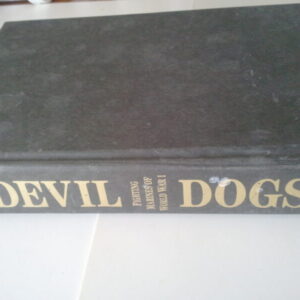
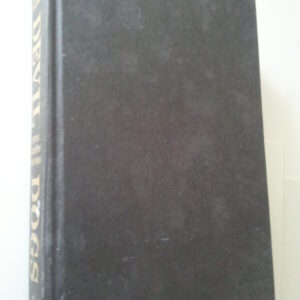
Devil Dogs HC Fighting Marines of WWI George B Clark Presidio 1999
$39.99 Add to cart -
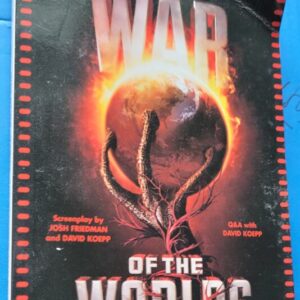
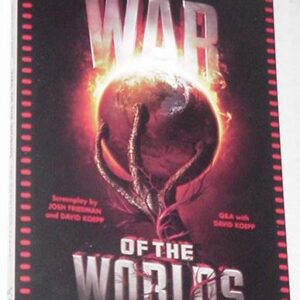
War of the World Shooting Script Josh Friedman David Koepp
$29.99 Add to cart -
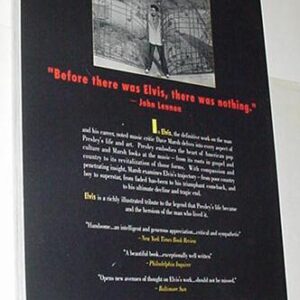

Elvis SC by Dave Marsh Thunder’s Mouth Press NM Condition
$49.99 Add to cart -


Generation Of Swine HC Gonzo Papers Vol 2 Hunter S Thompson
$99.99 Add to cart






